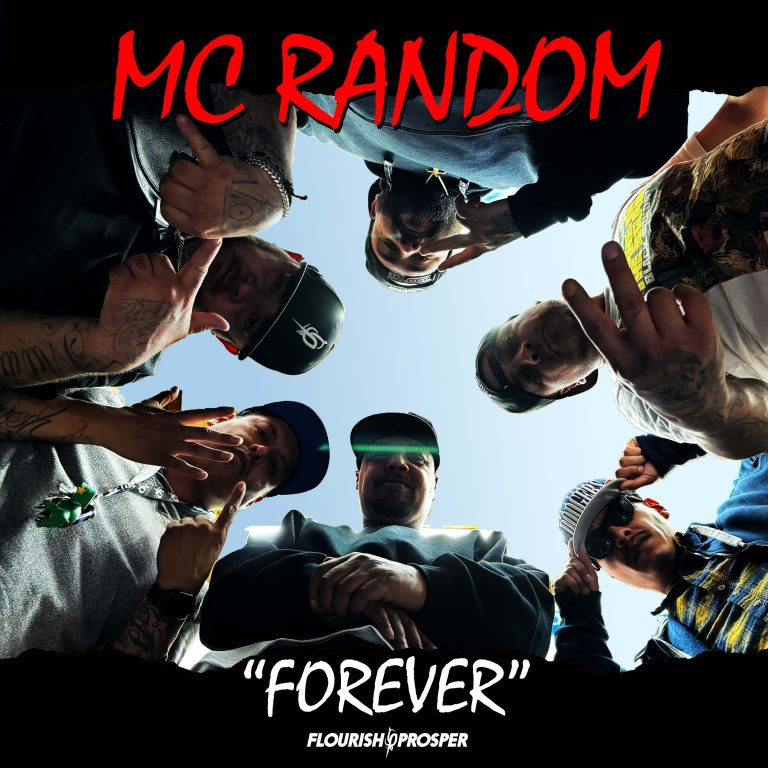Understanding the Concept of Mechanical Royalties
Mechanical royalties are a form of income that songwriters and publishers earn whenever their music is sold, streamed, or downloaded. This section delves deep into the very concept, origin, and significance of mechanical royalties in the music industry.
Origins and Significance
The concept of mechanical royalties dates back to the time when music started getting recorded onto physical mediums like records, tapes, and CDs. These ‘mechanically’ reproduced works mandated a fee paid to the creators of music each time their work was replicated. These royalty payments became a primary income source for songwriters and publishers, encouraging them to create more and ensuring fair compensation for their creative endeavors.
Calculating Mechanical Royalties
Mechanical royalties are typically calculated based on the number of copies sold or streamed. In the United States, the statutory rate is set by the Copyright Royalty Board and is currently 9.1 cents for songs five minutes or less. For songs over five minutes, it is 1.75 cents per minute. Though the rate can sometimes be negotiated between the publisher and the entity reproducing the music, this statutory rate is often the baseline.
Role in the Digital Age
In the new digital era, the concept of mechanical royalties has evolved but remains significant. Now, these royalties also apply to digital music services like Spotify, Apple Music, and YouTube. Each time a song is streamed or downloaded, a small payment is owed to the songwriter and publisher, although the rate differs from the physical medium due to the infinite reproduction potential of digital mediums. Furthermore, in the digital age, mechanical royalties not only stimulate creators to create more content but also play a crucial role in protecting intellectual property rights.
The Evolution of Mechanical Royalties Over Time
Origins of Mechanical Royalties
Mechanical royalties have a long history in the music industry, dating back to the early 20th century. Originally, these royalties were introduced as a way for songwriters and publishers to earn revenue from the sale of sheet music. This possibility manifested due to the widespread use of player pianos and phonographs, which facilitated the mechanical reproduction of music.
Transition to Physical Sales
With the emergence of mass media and consumer technology in the mid-20th century, mechanical royalties evolved to encompass revenues derived from the sale of physical records. Artists would receive a set sum from each record sold, and this income was protected under copyright law. Record companies were required to pay mechanical royalties to the rights holders, ensuring a steady stream of income for creators even if their work was not performed live.
The Digital Era and Streaming Services
The shift towards digital music in the 21st century has drastically changed the landscape for mechanical royalties. The rise of downloads initially complicated royalty distribution, with legal battles fought over how royalties should be allocated in the digital space. These disputes led to the implementation of new royalty rates for downloads and ringtone sales.
However, the advent of music streaming platforms has presented an additional layer of complexity. Streaming services, such as Spotify and Apple Music, pay mechanical royalties based on the number of streams a song receives rather than physical or download sales. This presents both opportunities and challenges for artists and copyright holders. On one hand, it offers the potential for increased exposure and revenue through global streaming. On the other hand, the per-stream payout is significantly lower than the revenue generated from physical sales or downloads, leading to ongoing debates about fair compensation in the digital age.
Overall, the evolution of mechanical royalties reflects the broader changes in the music industry, from the days of player pianos to the era of streaming services. The journey underscores the need for continual adaptation to ensure fair compensation for all contributors to music creation and production.
Implication of Digital Age on Mechanical Royalties

Shift from Physical to Digital Formats
The advent of the digital age has significantly altered the structure and distribution of mechanical royalties. Traditionally, these royalties were generated from the sales of physical copies of music, such as CDs and vinyl records. However, with the shift towards digital formats like downloads and streaming, the calculation and collection of mechanical royalties have become more complex.
Unlike traditional physical sales, digital platforms often involve multiple intermediaries between the artist and the end-user. These can include digital distributors, streaming platforms, and collection agencies. This additional complexity necessitates more sophisticated systems for tracking plays and distributing royalties appropriately.
Streaming Services and Mechanical Royalties
Streaming services represent a major change in how consumers listen to music, and they have correspondingly reshaped mechanical royalties. While earlier you earned mechanical royalties once a physical copy was manufactured, in the digital era, every play of a song on a streaming platform can generate mechanical royalties.
However, the rates are usually very low. Streaming services generally calculate royalties based on their total revenue, the number of subscribers and the total amount of streamed content. As such, individual streams contribute a minuscule amount towards these royalties. This leads to a situation where artists require a significant number of streams to generate substantial revenue from mechanical royalties.
Digital Distribution and Collection of Royalties
The digital age has also revolutionized the distribution and collection of mechanical royalties. Nowadays, various collection societies and companies exist that specialize in collecting digital mechanical royalties from online platforms. These organizations identify when and where an artist’s music is played and collect the corresponding royalties.
However, these processes are not always seamless. Considering the global reach of music in the digital age, it can be a challenge to manage and track the necessary licensing agreements and royalty distributions across different territories. Therefore, maintaining accurate metadata and employing a reliable collection agency is crucial for artists seeking to optimize their mechanical royalty income in the digital age.
How Artists can Maximize their Earnings from Mechanical Royalties
Understanding Mechanical Royalties
Mechanical royalties are a revenue stream that artists can tap into. These royalties are paid whenever a copy of an artist’s music is made, for example when songs are streamed online, downloaded, or sold in physical formats. To successfully navigate the world of mechanical royalties, artists must first understand the rules governing their distribution and payment. Knowledge is power, and comprehending how these royalties work can help to secure greater financial rewards.
Registration with a Performing Rights Organization
The collection of mechanical royalties is not automatic; artists must actively manage this aspect of their income. One of the best ways to ensure maximum earnings is to register with a Performing Rights Organization (PRO). This entity collects mechanical royalties on behalf of artists and distributes them accordingly. Organizations like ASCAP, BMI, or SESAC can be instrumental in safeguarding your rights and accruing your earnings.
Strategic Usage of Digital Platforms

In the digital age, streaming platforms provide unprecedented access to music, which means there are more opportunities for artists to earn mechanical royalties. To maximize earnings, artists need to strategically leverage these platforms. This could involve optimizing the metadata attached to your music, ensuring you have a broad digital footprint across multiple services, and regularly promoting your work to increase plays. Platforms like Spotify, Apple Music, and Amazon Music can provide significant income via mechanical royalties, particularly if your music enjoys high play rates.
Partnering with an Administrator
Sometimes, managing royalties can be complex and time-consuming. In such cases, artists can choose to partner with a publishing administrator or a royalties collection agency. These entities can handle all aspects of royalty collection, including monitoring, auditing, and payments. They possess the expertise to navigate the intricate landscape of copyrights, laws, and international regulations, providing artists with peace of mind and the assurance that they’re maximizing their mechanical royalty earnings.
Future Expectations for Mechanical Royalties in the Digital Age
Evolution of Mechanical Royalties in the Digital Landscape
The transition from physical to digital music consumption has led to a profound reshaping of how mechanical royalties are generated and collected. In the past, they predominantly stemmed from the sale of tangible music formats such as CDs or vinyl records. Now, with the proliferation of streaming platforms like Spotify, Apple Music, and YouTube, mechanical royalties are increasingly generated through streams, not physical sales.
Streaming services generate mechanical royalties for every single play, which has the potential to significantly boost incomes for songwriters and publishers. However, the per-stream payout is much lower compared to the revenue from a single physical sale. The challenge in the digital age is to ensure that these micropayments amount to a fair compensation given the volume of digital streams.
Digital Service Providers and Royalty Distribution
Digital Service Providers (DSPs) play a pivotal role in the distribution of mechanical royalties in the digital age. These entities are mandated to obtain a mechanical license for each song in their catalog and pay royalties to copyright owners. In the United States, for example, the recently established Mechanical Licensing Collective (MLC) is responsible for collecting and distributing these royalties from streaming platforms to right holders.
However, DSPs like Spotify have faced criticism and legal actions regarding their royalty distribution practices. Transparency is an ongoing issue in this sector, as songwriters and publishers often lack clarity about how their music’s online usage translates into royalty payments.
Technology’s Role in Enhancing Royalty Collection
Digital technology is rapidly evolving to address the challenges associated with royalty collection in the digital age. Blockchain technology, for instance, is being explored as a potential solution for tracking music plays accurately and transparently. Similarly, artificial intelligence can streamline complex data analysis, ensuring that royalty distributions are accurate and timely.
Moreover, new business models are being developed to adapt to the unique environment of digital music consumption. Micro-licensing services and direct licensing agreements with DSPs are a couple of examples of such novel practices.
In conclusion, although there are numerous challenges associated with mechanical royalties in the digital age, the continuous evolution of technology and new business models provide hope for fairer and more transparent practices in the future.
Looking for a trusted and knowledgeable agency to help market your music career?
Contact us at + 1 626 872-5151 or info@flourishprosper.net
Or Checkout our website at flourishprosper.net




